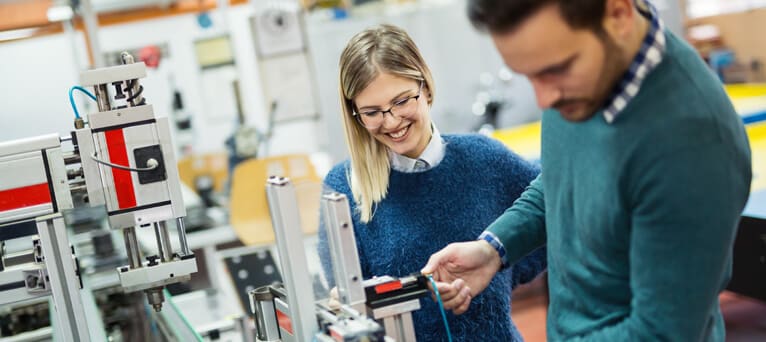One of the key components of a nuclear fusion reactor is a device known as a gyrotron. Its purpose is to insert energy into the fusion plasma, a process known as electron-cyclotron-heating (ECH). These gyrotrons produces mega-watt levels of power; but operate maximally at ~50% efficiency (at the frequencies required for fusion). The aim of this ongoing project is an Ultra-Efficient Free Electron Maser will allow wall-plug efficiencies of > 70%.
One of the key differences between the proposed system and previous Energy Recovery Free Electron Masers is the scaling. By using a mini-undulator (period < 8 mm) instead of one with a period between 40 – 50 mm we can reduce the required beam energy by a factor of ~5. The total system length will be < 3 m. With the cathode set at ~-50 kV the high voltage interaction region would not need to exceed ~280 kV. The boost in energy efficiency for this FEM arises in part due to the reduced energy cost of stray electrons (compare electrons lost at ~330 kV as opposed to ~1.7 MV).
Proposed Scheme of Work
It is anticipated that by January 2023 a prototype of an entirely novel mini-undulator will be in construction. There are significant fundamental unanswered questions:
1) What is the maximal/optimal ponderomotive trapping given a combination of temporal and spatial tapering when parameters such as: undulator period and tapering, undulator gap, total undulator length, on-axis field , electron beam energy and radius and temporal tapering voltage, resonator feedback and length. This can be studied in part using coupled-mode theory FEL codes.
2) What is the optimal High Voltage Network (HVN), that is, deceleration and collection network? This will be heavily informed by the work/question described in point (1). Previous FEM HVNs have been based on re-purposed ion-accelerators, therefore there is considerable scope for re-design.
Finally, should funds be available to construct a prototype system the student will contribute to the testing.
Supervisory team
Dr Harry Marks (Lancaster University): currently supervises two PhD students, and one PDRA.
Dr Amos Dexter (Lancaster University)
Benefits
Forging links between CI and outside parties interested in Fusion research:
At the recent NVEC 2022 conference at CI Mark Henderson of UKAEA gave a talk describing how one of the main obstacles to a net-power producing fusion reactor in the UK was a Microwave Source capable of producing high power with efficiency > 60% at discrete frequencies in the range 90-210 GHz.
As the project moves forward and proves the concept it will be natural to have links with ITER who require 170 GHz ECH and the Wendelstein-7X which requires 140 GHz ECH, presently for both groups their gyrotrons operate at ~50% efficiency. The US ARC team at MIT report that a limiting factor for them is available (efficient) sources at ~300 GHz.
High Novelty: No equivalent FEM has ever been designed or constructed. Conceptually the closest project was one proposed in 1990 for ECH with a 1 cm period undulator lasing between 300-600 GHz [[i]]. With proposed operation with currents between 30-64 A and beam voltages between 500 kV and 1 MV the scale and design philosophy of the system makes it quite dissimilar. For comparison the FOM FEM only used ~7 A (at 1.77 MV, generating 730 kW).
The student working on the electron-transport for this system will be working in a parameter space not previously developed.
Low risk, huge reward: The project aims to solve a problem with enormous financial, societal, and environmental benefit. The risk is miniscule compared to the payoff if the goals are met. It is expected that new proprietary technology will be developed in the drive to complete the project.
i Booske, J.H., Radack, D.J., Antonsen, T.M., Bidwell, S.W., Carmel, Y., Destler, W.W., Freund, H.P., Granatstein, V.L., Latham, P.E., Levush, B. and Mayergoyz, I.D., 1990. Design of high-average-power near-millimeter free electron laser oscillators using short period wigglers and sheet electron beams. IEEE transactions on plasma science, 18(3), pp.399-415.

 Continue with Facebook
Continue with Facebook



